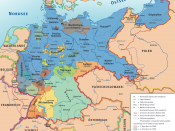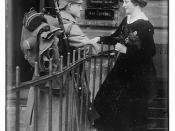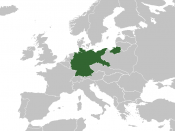Weimar Republic was a poor republic, but they have grown so much. During the 1924-1929, Weimar Republic was having a growing culture with so many cultures, which included literatures, arts and music, architectures, theatres and films.
Weimar Republic has some famous writers such as Mann who wrote "Buddenbroks". He is famous because of his book called "Confessions of Unpolitical German". It was written about the German culture and he wrote it during the war. So that's why he knew many things about German culture. He was a supporter of Weimar Republic too. He wrote this entire book just because he has cultural and psychological feelings to Weimar and German. The other famous writer is Alfred Doblin, the man who wrote "Alexanderplatz". This book was represented on how cruel the German was and how deep their wickedness.
For arts, Weimar culture also has some famous artists. Barlach was one of them.
In 1928, he made so many anti-war sculptures based on his experiences because he was in the war before he made the sculpture. He was the target of the people critics, because he made anti-war sculptures. For music, one of the well-known musicians was Paul Hindemith. During that time, he composed a song, but that song was banned due to their modernity. However, after the Nazis banned his song, he grew famous and his songs have orchestral colors and gestures, characterizing his music.
Arnold Schoenberg(1874-1981) was a Austrian composer. But he then became a U.S. citizen in 1941. He lived in Vienna until 1925. In 1925 to 1933, he taught at the Prussian Academy of Fine Arts in Berlin. Arnold Schoenberg also taught for a year at the Malkin Conservatory, Boston. The twelve-tone technique he invented, used to some extent in five piano pieces and a Serenade in 1923,


